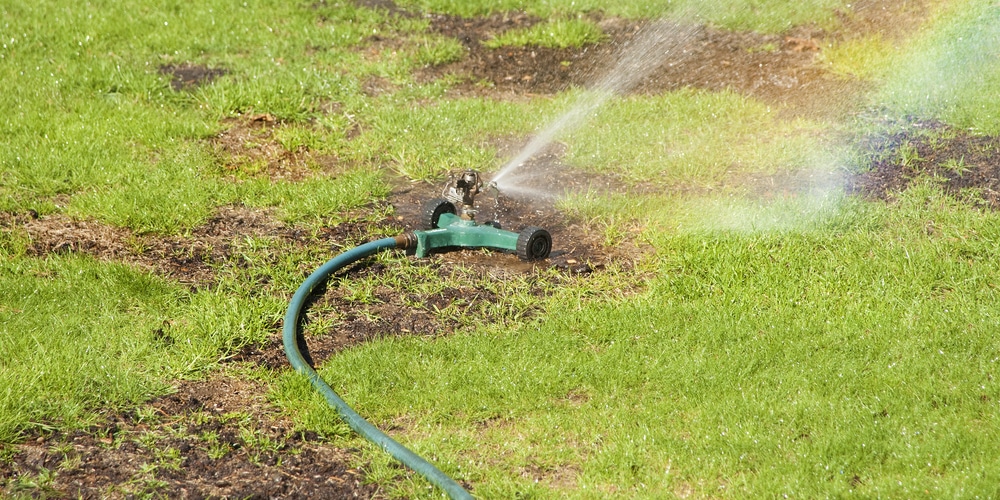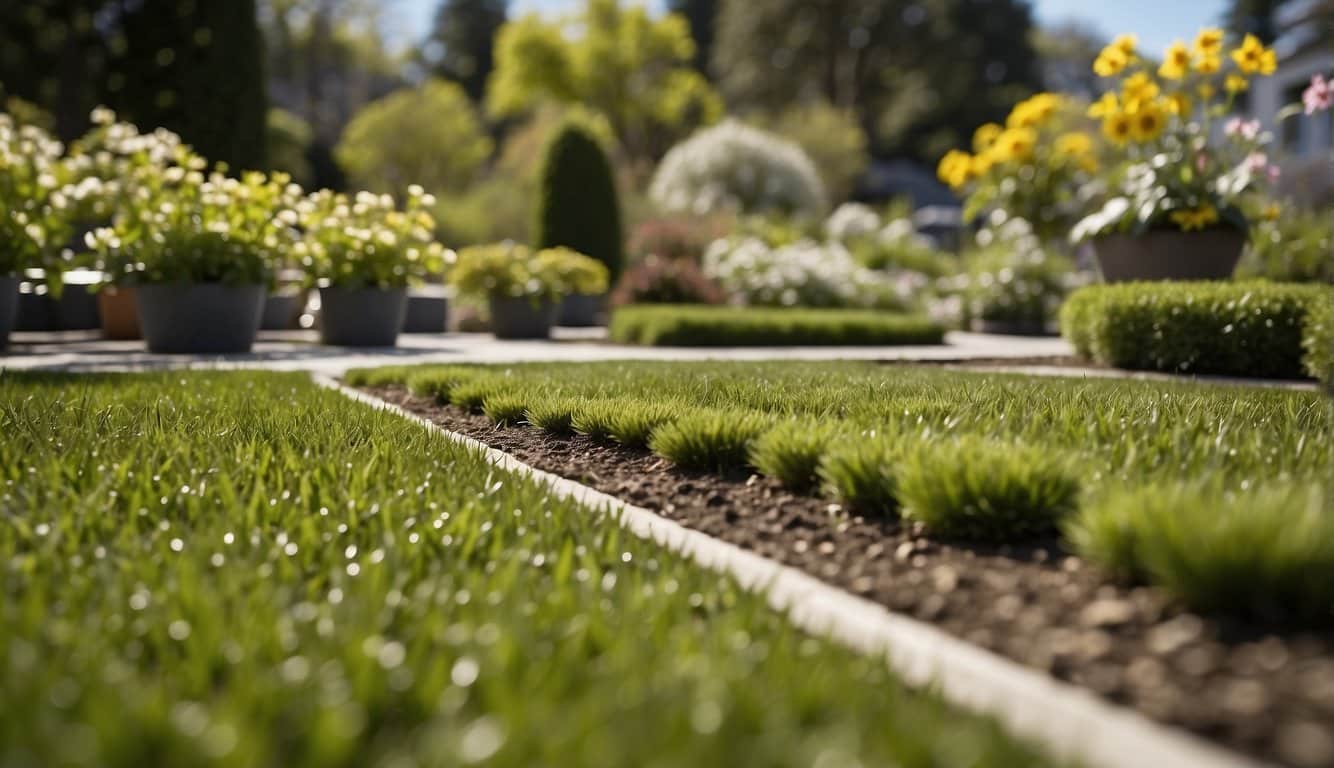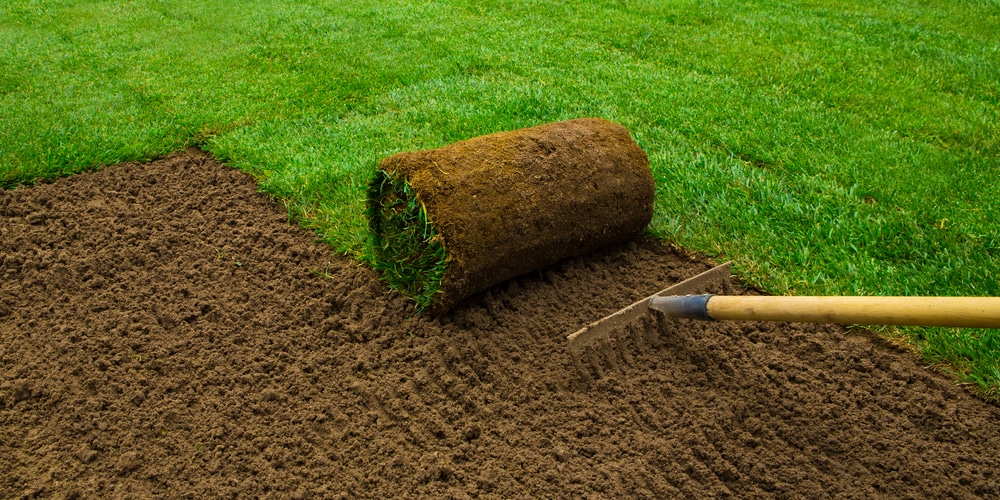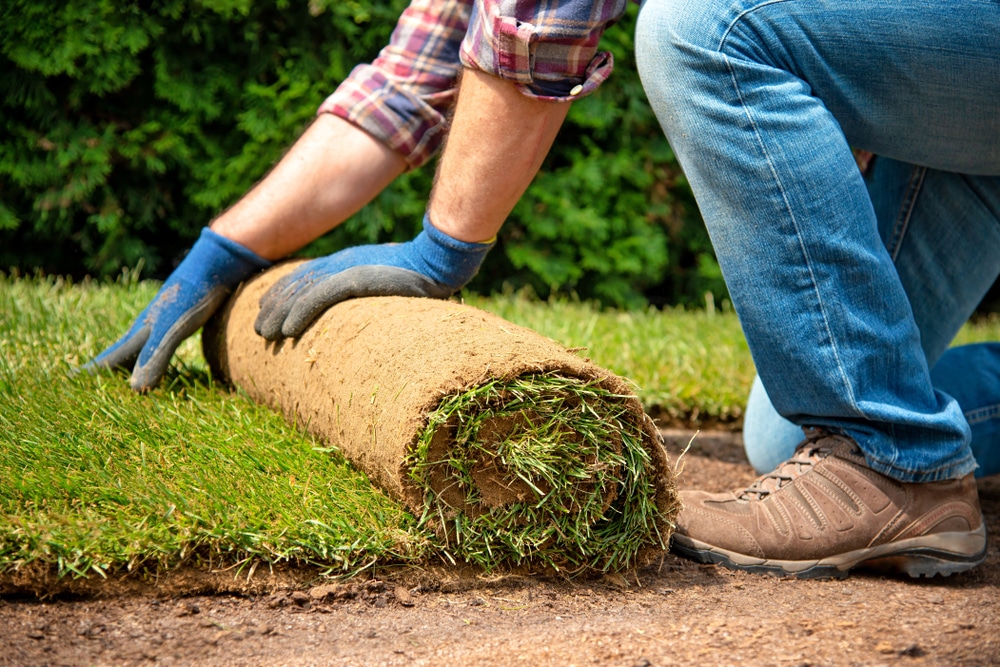The Basics
When embarking on establishing a new lawn, it’s essential to grasp the fundamentals. Make sure to weigh the pros of a lush turf to timing the project for optimal growth.
Benefits of Establishing a New Lawn
- Aesthetic Appeal: A new lawn can transform your home’s exterior, giving it a vibrant, welcoming facade.
- Environmental Benefits: Grass plays a critical role in carbon sequestration and air purification, contributing to a healthier planet.
- Recreation and Comfort: Your lawn serves as a natural carpet, providing a soft surface for various outdoor activities and relaxation.
Choosing the Right Season for Lawn Establishment
- Spring or Fall?: These temperate seasons are ideal for lawn establishment, promoting robust root growth.
- Temperature Considerations: Aim for a period when the soil temperature ranges between 50°F-65°F, which is typically achieved in spring.
Evaluating Seed and Sod Options
To craft the perfect green canvas for your home, it’s essential to weigh the benefits and drawbacks of seeding versus sodding and to consider the financial implications of each.
Pros and Cons of Seeding
- Pros:
- Variety: Seeding offers a wide range of grass types suited for your soil and climate conditions.
- Cost-Effectiveness: It’s generally less expensive than sodding, offering a lower upfront investment.
- Cons:
- Time: Seeding requires patience; it takes time for seeds to germinate and establish a full lawn.
- Maintenance: Seeding may demand more initial care, such as watering and protecting the area from pests.
Pros and Cons of Sodding
- Pros:
- Instant Lawn: Sod provides an instant lawn, quickly transforming bare soil into a lush green space.
- Erosion Control: Sod roots quickly, offering excellent soil stabilization and erosion control.
- Cons:
- Cost: Sod is a more expensive option due to the labor and cultivation required to grow the turf before installation.
- Selection: Limited grass type options, as it’s not as easy to find a variety of sod as it is to find different types of grass seeds.
Cost Comparison
When evaluating the costs of seeding and sodding, consider not only the initial investment but also the ongoing maintenance and care that your new lawn will require. Here’s a quick overview:
- Seeding:
- Cost per square foot: $0.10 to $0.20
- Total cost varies depending on lawn size and grass type.
- Sodding:
- More upfront investment, often several times higher than seeding.
- Longer-term savings in maintenance and water might offset the initial cost for some sod varieties.
Site Preparation for Your Lawn
Proper site preparation is a critical step in establishing a healthy and resilient lawn, whether you choose to seed or lay sod. The groundwork you lay before planting will influence your lawn’s success for years to come.
Soil Testing and Enhancement
- Soil Testing: Begin by testing your soil to determine pH levels and nutrient deficiencies.
- Ideal pH: Typically, grass thrives in a pH range of 6.0 to 7.0.
- Nutrient Analysis: Test for key nutrients like nitrogen, phosphorus, and potassium.
- Enhancement: Based on your soil test results, enhance your soil accordingly.
- Adjust pH: Use lime to raise pH or sulfur to lower it to the optimal range.
- Add Nutrients: If your soil is lacking, incorporate the necessary soil amendments.
Clearing the Ground
- Remove Debris: Clear your lawn area of rocks, sticks, and any existing vegetation.
- Weed Removal: Eradicate all weeds, either by hand or with a non-residual herbicide to prevent future competition for nutrients and water.
Leveling and Grading
- Rough Grading: Even out the general surface of your lawn.
- Slope Creation: Ensure there is a gentle slope away from buildings for proper drainage.
- Fill Low Spots: Use topsoil to fill in depressions to avoid water pooling.
- Final Leveling: After rough grading, do a finer leveling to prepare a smooth surface for seeding or laying sod.
- Use a landscaping rake for large areas or a hand rake for smaller patches.
- Aim for the soil surface to be 1 inch below sidewalks or driveways to accommodate the height of new sod or seed growth.
The Seeding Process

When establishing a new lawn in the spring, the secret to success with seeding lies in the quality of the seeds you choose, the seeding techniques you apply, and the care you provide after planting.
Selecting Quality Seeds
- Look for seeds that are adapted to your regional climate and the specific conditions of your lawn area, such as shade tolerance or drought resistance.
- Check the seed label for information on purity, germination rates, and the presence of weed seeds. This is crucial for avoiding future weed problems and ensuring a healthy lawn.
Seeding Techniques
Proper technique can make or break your lawn’s success:
- Prepare the soil by loosening the top 2-3 inches and leveling the ground.
- Use a spread rate recommended for the seed type for uniform coverage.
- Rake lightly to ensure seeds make good contact with the soil without burying them too deep.
- Roll the area with a lawn roller to improve seed-to-soil contact, which is necessary for germination.
Post-Seeding Care
The care you provide after seeding is essential:
- Maintain consistent moisture by watering lightly and frequently until germination, usually keeping the top inch of soil moist.
- As the seeds germinate, gradually reduce watering frequency but increase the depth, aiming to moisten the soil up to 6 inches.
- Avoid foot traffic on the newly seeded area to prevent seed displacement and soil compaction.
The Sodding Process
Establishing a new lawn by sodding can yield a lush, green landscape quickly and effectively. It’s about fast tracking your lawn’s growth by laying down mature turf.
Selecting Quality Sod
When shopping for sod, it’s crucial to select high-quality, healthy turf. Here’s what to look for:
- Grass Species: Ensure the sod consists of a grass species suitable for your climate and soil.
- Color: Look for a uniform, vibrant green color indicating good health.
- Thickness: The sod should have a consistent thickness, with dense roots and a moist soil base.
- Maturation: Check that the sod is mature enough with well-interconnected roots but not overgrown.
Sod Laying Techniques
Proper technique is essential when laying your sod. Follow these steps for the best results:
- Prepare the Soil: Remove debris, level the ground, and add a starter fertilizer.
- Lay the First Rows: Start at the straightest edge and unroll the sod, avoiding footprints on prepared soil.
- Stagger the Seams: Like laying bricks, ensure that the seams are staggered to prevent lines.
- Trim the Edges: Use a sharp knife to cut pieces and fit them around obstacles.
- Roll the Sod: After laying, use a roller to ensure good contact between the sod and soil.
Post-Sodding Care
After installation, sod requires special care for it to establish well:
- Watering: Keep the sod moist but not soaked. You will typically need to water twice a day for the first week.
- Mowing: Wait until the roots have firmly established before the first mow, which is usually two to three weeks.
- Fertilizing: Apply a light fertilizer after about six weeks to promote healthy growth.
Frequently Asked Questions
Deciding on the right approach for establishing your new lawn this spring is crucial. Below you’ll find specific answers to common queries, helping you weigh cost, method, and timing for a lush, green landscape.
What are the cost differences between laying sod and planting seed for a new lawn?
- Sod: More expensive upfront due to the labor and cultivation needed before purchase.
- Seed: More cost-effective, but may require supplemental materials like fertilizer.
Factors impacting lawn establishment costs include preparation, materials, and maintenance.
What are the pros and cons of choosing sod over seed for establishing a lawn?
Pros of Sod:
- Immediate visual appeal and use.
- Less initial maintenance and faster stabilization.
Cons of Sod:
- Higher initial investment.
- Limited variety of grass types available.
Choosing sod versus seed can be a decision of convenience and short-term results versus diversity and budget.
When is the best time to plant grass seed in climates similar to Minnesota’s?
For successful grass seed planting in Minnesota-like climates, aim for:
- Spring: As soon as the soil can be worked.
- Fall: Prime time due to cooler temperatures and less competition from weeds.
Seeding during these times ensures optimal growth conditions.
How does having pets affect the decision between installing sod and seeding a lawn?
- Sod: Offers a quick solution to avoid pets tracking in mud.
- Seed: Requires time for germination, so pets may need to be kept off the area to prevent disturbance.
Your choice between sod and seed can influence your pets’ outdoor activity during lawn establishment.
What is the best type of grass seed for sunny areas in Minnesota?
For sunny spots in Minnesota, consider grass seed varieties such as:
- Kentucky Bluegrass
- Perennial Ryegrass
- Fine Fescue
Is overseeding an existing lawn preferable to laying new sod?
- Overseeding: Ideal for rejuvenating thinning turf without redoing the entire lawn.
- New Sod: Best if the current lawn is heavily damaged or you desire immediate results.
Assessing the current state of your lawn will guide your decision on overseeding versus new sod installation.
Last update on 2025-06-06 / Affiliate links / Images from Amazon Product Advertising API





